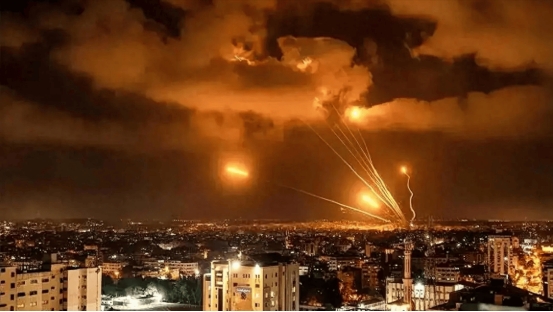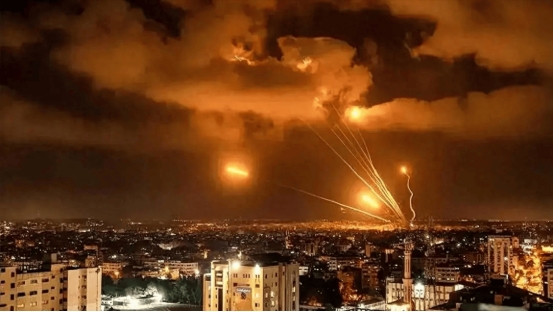Fighting breaks out in the Middle East, Netanyahu declares "action continues to the end", Iranian F-14s take off and standby, gold soars
- 2025年6月16日
- Posted by: Macro Global Markets
- Category: News

Spot gold reached a high of $3,440 per ounce, up 1.83% on the day, a new high in nearly a month; Brent crude oil soared to $89.65 per barrel, up 6.2%. After Israeli Prime Minister Netanyahu made a tough statement on the 13th, all flights at Tehran Airport in Iran were suspended, and F-14 fighter jets carrying "Faith-90" missiles took off urgently. The situation in the Middle East was on the verge of getting out of control, and safe-haven assets soared across the board.

In the early morning of June 13, local time, Israel launched a military operation codenamed "Lion's Power", dispatching 24 F-35I fighters and submarines to launch cruise missiles to carry out precision strikes on nuclear facilities and missile factories in six places including Tehran and Isfahan in Iran. The Israeli army claimed that "90% of centrifuge equipment was destroyed" and confirmed that Mohammad Eshaghchi, a senior nuclear scientist of the Iranian Revolutionary Guard, and commander Hussein Salami were killed in the airstrike.
Netanyahu made a tough statement: "The operation will continue for several days until Iran loses its nuclear deterrence capability." This is the most serious military strike Israel has launched against Iran since 2018, directly breaking Iran's "red line" - Iran has previously clearly warned that "attacking nuclear facilities is tantamount to declaring war."
2. Iran’s retaliation begins: airports closed + fighter jets launched
Iran responded swiftly:
Military countermeasures: The Islamic Revolutionary Guard Corps announced the activation of the border air defense system, and F-14 fighter jets carrying the "Faith-90" missile with a range of 300 kilometers took off, aiming directly at Israeli airspace;
Civilian warning: Tehran Imam Khomeini Airport suspended all flights, saying it was "observing the development of the situation", and the market was worried that the crude oil transportation channel would be blocked;
The US attitude is subtle: the commander of the Central Command, Kurilla, arrived in Israel urgently, but Secretary of State Rubio stated that he "did not participate in the action" and only called for "restraint." Analysts pointed out that the United States is facing inflationary pressure in the election year and is unwilling to be directly involved in the Middle East war.
3. Gold surged by $30: driven by risk aversion premium and expectations of rate cuts
Stimulated by the situation, gold jumped up by $12 in the Asian session on June 13, reaching a high of $3444.41 per ounce. Driving logic:

Expectations of interest rate cuts: The U.S. PPI in May was 2.6% year-on-year (core 3.0% hit a one-year low), coupled with initial jobless claims of 248,000 (nearly August high), CME data showed that the probability of the Fed cutting interest rates in September rose to 82%;
Technological breakthrough: Spot gold closed above $3,400 on the daily chart, forming an "island reversal". The 15-minute RSI was overbought but bulls were in control, with $3,390 (June 12 low) becoming the key support.
4. Market risk reminder: The “controllability” of war is the key
Short-term pullback risk: Gold prices are oversold (RSI daily line 72). If Iran only retaliates "symbolicly" (such as attacking the Israeli consulate in Iraq), profit-taking may trigger a pullback;
Crude oil shock: If Iran blocks the Strait of Hormuz, oil prices may break $100, forcing the Federal Reserve to postpone rate cuts, which is bearish for gold;
Policy variables: If the Federal Reserve meeting on June 19 sends a hawkish signal, gold may give up its geopolitical premium.
